(!) Since support from Microsoft will end on January 14 2020, Windows 7 user might not be able to use MISUMI website effectively. Please consider to update your system as ‘MISUMI Website system requirement’.
- แจ้งวันหยุดทำการในเดือน มิถุนายน 2567 | Notice holiday in June 2024 > คลิก
Photoelectric Sensors, Fiber Sensors(Fiber clothing material:Fluororesin)
Search by specifying the lower class category
-
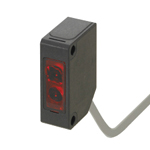 Photoelectric Sensors
Photoelectric Sensors
-
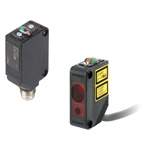 Laser Sensor
Laser Sensor
-
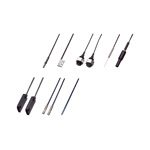 Fiber Units
Fiber Units
-
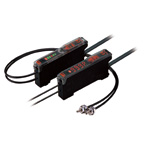 Fiber Sensors (Amplifiers)
Fiber Sensors (Amplifiers)
-
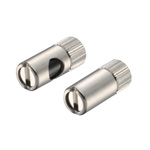 Lens for Sensor (for Photoelectric Sensors and Fiber Sensors)
Lens for Sensor (for Photoelectric Sensors and Fiber Sensors)
Configure
Specification/Dimensions
-
Detection Distance(mm)
- 0-3M
- 0~4
- 0~15
- 1,000
- 1~15
- 1~30
- 2~6
- 3~50
- 5
- 5~15
- 5~30
- 5.4~9
- 6
- 8~20
- 10
- 10 ± 2
- 10~20
- 10~250
- 12
- 12~30
- 15
- 15m
- 15~38
- 16
- 17
- 20~100mm
- 27
- 30
- 30±3
- 30 ± 5
- 30~200
- 30~300
- 35 ± 5
- 35~200mm
- 50
- 50~3000
- 60
- 70 ± 10
- 100
- 100mm
- 110
- 120
- 130
- 140
- 150
- 150~1500
- 180
- 190
- 200
- 200-3,000
- 220
- 250
- 280
- 300
- 300mm
- 350
- 360
- 400
- 450
- 500
- 550
- 600
- 680
- 800
- 900
- 1000
- 1100
- 1200
- 1350
- 1500
- 1550
- 1700
- 1780
- 1800
- 2000
- 2000mm
- 2600
- 2700
- 2800
- 3000
- 3500
- 3800
- 4000
- 5000
- 20000
- 30000
The detecting distance can vary with your amplifier, operating environment and the detected object.
-
Type
- Photoelectric Sensor
- Laser Sensor
- Fiber Unit
- Fiber Sensor (Amplifier)
- Lens for Sensor
- Fiber Optic Sensor
-
Detection Type
- Transparent
- Reflection
- Liquid Surface Contact
- Recurrent Reflection
-
Light Axis Arrangement Type
- Emitting and Receiving Sections Integrated, Single
- Emitting and Receiving Sections Integrated, Reflection Plate Used
- Emitting and Receiving Sections Separated
-
Head Shape
-
Detection Light Type
-
Detection Object
- Colored Surface
- Transparent Body
- Mirror Surface Body
- Small Area
- Thin Line Shape
- Liquid Surface (Pipe Mounting)
- Liquid Surface (Contacting)
- Wafer Mapping
- Label
-
Amplifier Installation Type
- Built-in Type
- Separated Type
- Amplifier Only
-
Detection Light Color
-
Head Material
-
Detection distance 【classification】(mm)
- ~10
- ~20
- ~30
- ~50
- ~100
- ~200
- ~300
- ~400
- ~500
- ~1000
- ~2000
- ~3000
- ~4000
- ~5000
- ~10000
- More than 10000
* ~20 represents over 10, and 20 or less.
-
Operating Environment
-
Protection Structure
-
Amplifier Function (Selectable only when Amplifier is installed)
-
Fiber Type (Selectable only when Amplifier is not installed)
-
Fiber clothing material
-
Fiber minimum bend R(mm)
Brand |
|
|---|---|
Filter By |
|
| CAD |
|
| Days to Ship |
|
- 2 items
- Sort By
-
You can add up to 6 items per a category to the compare list.

Fiber Unit Liquid Surface Detection Type
OPTEX FA
[Features]
· Fiber unit to detect liquid.
· Select the type according to liquid level, liquid leakage, water detection and use.
· Array type which can be mounted on a pipe of ø8 to 80 mm NF-DF07.
· Have a liquid pool prevention mechanism for all types of liquid level contact typeFrom: ฿ 11,420.00 Days to Ship: 22 Day(s)
22 Day(s)
-
You can add up to 6 items per a category to the compare list.

![Oil Resistant Photoelectric Sensor [E3ZR-C]](//th.misumi-ec.com/en/linked/material/mech/OMR1/PHOTO/221006384398.jpg?$product_view_b$) Until 31/03/2025
Until 31/03/2025 Until 31/03/2025
Until 31/03/2025Oil Resistant Photoelectric Sensor [E3ZR-C]
OMRON
A photoelectric sensor that's resistant to cutting fluid and suppresses breakdown due to ingress of cutting fluid
[Features]
· Uses a fluorine resin cable that's resistant to cutting fluid
· Cutting fluid ingress is prevented by a sealing method with no gaps at the joint
· Protection Degree IP67G (JIS C 0920 Annex 1)From: ฿ 9,108.00 Special Price Days to Ship: 6 Day(s)
6 Day(s)
| Brand |
|---|
| Product Series |
| CAD |
| From |
| Days to Ship |
| Detection Distance(mm) |
| Type |
| Detection Type |
| Light Axis Arrangement Type |
| Head Shape |
| Detection Light Type |
| Detection Object |
| Amplifier Installation Type |
| Detection Light Color |
| Head Material |
| Detection distance 【classification】(mm) |
| Operating Environment |
| Protection Structure |
| Amplifier Function (Selectable only when Amplifier is installed) |
| Fiber Type (Selectable only when Amplifier is not installed) |
| Fiber clothing material |
| Fiber minimum bend R(mm) |
You can add up to 6 items per a category to the compare list. | You can add up to 6 items per a category to the compare list. | |
| Brand | OPTEX FA | OMRON |
| Product Series | ||
| CAD |
|
|
| From | ฿ 11,420.00 | ฿ 9,108.00 Special Price On Sale Until 31/03/2025 |
| Days to Ship | 22 Day(s) | 6 Day(s) |
| Detection Distance(mm) | - | - |
| Type | Fiber Unit | - |
| Detection Type | Liquid Surface Contact | Transparent / Reflection |
| Light Axis Arrangement Type | Emitting and Receiving Sections Integrated, Single | Emitting and Receiving Sections Integrated, Single / Emitting and Receiving Sections Integrated, Reflection Plate Used / Emitting and Receiving Sections Separated |
| Head Shape | Cylindrical | Square |
| Detection Light Type | Standard | Standard |
| Detection Object | Transparent Body / Liquid Surface (Contacting) | - |
| Amplifier Installation Type | Separated Type | Built-in Type |
| Detection Light Color | - | Red |
| Head Material | - | Stainless Steel |
| Detection distance 【classification】(mm) | - | ~500 / ~3000 / More than 10000 |
| Operating Environment | Standard / Cold Resistant | Oil Resistant |
| Protection Structure | - | IP67 |
| Amplifier Function (Selectable only when Amplifier is installed) | - | - |
| Fiber Type (Selectable only when Amplifier is not installed) | Standard | - |
| Fiber clothing material | Fluororesin | Fluororesin |
| Fiber minimum bend R(mm) | 60 | - |
Loading...
Application example related to this category
Related Categories to Photoelectric Sensors, Fiber Sensors
FAQ Photoelectric Sensors, Fiber Sensors
- Question: What is the main advantage of using photoelectric sensors in industrial applications?
- Answer: Photoelectric sensors offer a significant advantage in industrial settings due to their non-contact detection capability. This feature eliminates the need for physical contact with the target object, reducing wear and tear and enabling reliable, long-term operation. Their quick response time is crucial for applications requiring rapid detection, contributing to increased efficiency in various industrial processes.
- Question: How do I choose the right photoelectric sensor?
- Answer: Selecting the appropriate photoelectric sensor involves considering several factors. Evaluate the sensing distance required for your application, environmental conditions, such as ambient light and temperature, and the characteristics of the target objects. Differentiate between through-beam, reflective, and retroreflective sensors based on the specific needs of your application.
- Question: Can these sensors be used in outdoor environments?
- Answer: Some photoelectric sensors are designed for outdoor use. It's essential to choose sensors with suitable Ingress Protection (IP) ratings to ensure they can withstand exposure to weather elements and maintain reliable performance.
- Question: What is the difference between a through-beam sensor and a reflective sensor?
- Answer: Through-beam sensors consist of separate emitter and receiver units, with the light beam traveling from one unit to the other. In contrast, reflective sensors integrate both the emitter and receiver in the same housing, detecting the light reflected off a target object.
- Question: Can photoelectric sensors detect transparent or highly reflective objects?
- Answer: Certain photoelectric sensors are specifically engineered to detect transparent or highly reflective objects. Choosing sensors with the appropriate technology, such as background suppression or polarization filters, ensures accurate detection in challenging conditions.
- Question: What maintenance do photoelectric sensors require?
- Answer: Photoelectric sensors typically demand minimal maintenance. Regularly cleaning the sensor lens to prevent the accumulation of dust or dirt is recommended to ensure consistent and accurate performance over time.
- Question: Are there any safety considerations when using photoelectric sensors?
- Answer: When using photoelectric sensors, it's crucial to ensure compliance with relevant safety standards. Installation should follow the manufacturer's guidelines, and users should be aware of the sensor's limitations. For critical applications, incorporating redundancy or additional safety measures is advisable to mitigate potential risks.






















![Oil Resistant Photoelectric Sensor [E3ZR-C]](http://th.misumi-ec.com/en/linked/material/mech/OMR1/PHOTO/221006384398.jpg?$product_view_b$)

![Oil Resistant Photoelectric Sensor [E3ZR-C]](http://th.misumi-ec.com/en/linked/material/mech/OMR1/PHOTO/221006384398.jpg?$product_view_c$)









How can we improve?
How can we improve?